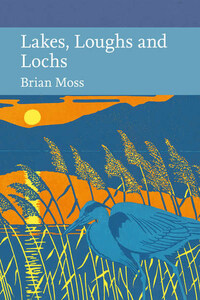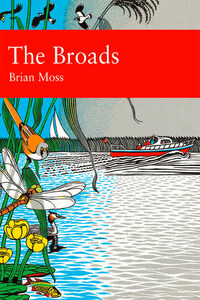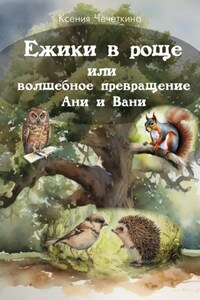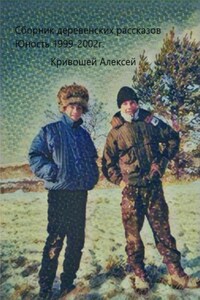William Collins
An imprint of HarperCollinsPublishers 1 London Bridge Street London SE1 9GF WilliamCollinsBooks.com This eBook edition published by William Collins in 2015 Copyright © Brian Moss, 2015 Brian Moss asserts the moral right to be identified as the author of this work. Cover design by Robert Gillmor. A catalogue record for this book is available from the British Library. All rights reserved under International and Pan-American Copyright Conventions. By payment of the required fees, you have been granted the non-exclusive, non-transferable right to access and read the text of this eBook on-screen. No part of this text may be reproduced, transmitted, downloaded, decompiled, reverse engineered, or stored in or introduced into any information storage and retrieval system, in any form or by any means, whether electronic or mechanical, now known or hereinafter invented, without the express written permission of HarperCollins Publishers. Source ISBN: 9780007511389 eBook Edition © June 2015 ISBN: 9780007511402 Version: 2015-04-06
EDITORS
SARAH A. CORBET, SCD DAVID STREETER, MBE, FIBIOL JIM FLEGG, OBE, FIHORT PROF. JONATHAN SILVERTOWN PROF. BRIAN SHORT
*
The aim of this series is to interest the general
reader in the wildlife of Britain by recapturing the enquiring spirit of the old naturalists. The editors believe that the natural pride of the British public in the native flora and fauna, to which must be added concern for their conservation, is best fostered by maintaining a high standard of accuracy combined with clarity of exposition in presenting the results of modern scientific research.
Cover
Title Page
Copyright
About the Editors
Editorsâ Preface
Authorâs Foreword and Acknowledgements
1 Romance and Reality: Limnology in Britain and Ireland
2 The Nature of Lakes
3 Dramatis Personae: The Small Cast-members and the Big Roles
4 Animals: The Names in Bright Lights
5 On the Edge of the Land: The Littoral Zone
6 The Plankton: Hazard and Survival
7 The Deep, the Old, the Dark and the Cold
8 People and Lakes in Britain and Ireland: Damage and Repair
9 Mossâs Tour: An Itinerary Among the Lakes of Britain and Ireland
10 The Future of the Lakes of Britain and Ireland
Notes
References
Index
The New Naturalist Library
About the Author
About the Publisher
OUR UNDERSTANDING OF THE FUNCTIONING of freshwater habitats has made great advances in the more than 60 years since the publication of Macan and Worthingtonâs New Naturalist Life in Lakes and Rivers was published. Brian Moss brings us a vivid account of the current state of subject, to which he has himself made a very substantial contribution. He shows how landscape, geology, chemistry and weather, as well as living organisms of many different groups, contribute to the functioning of the system, and help to determine whether we have a clear lake with submerged plants or a smelly soup of cyanobacteria; and he takes us on a tour of Britain and Ireland to introduce us to a diversity of lakes and to show how geographical variation in lake types depends on climate and geological history. He shares his delight in pristine waters, and tells sorry tales of the results of human intervention, whether inadvertent due to changes in the catchment, or resulting from âmanagementâ, which has often resulted in unexpected and unwanted effects.
These freshwater ecosystems appeal particularly to broad-minded naturalists because so many different groups of organisms interact here, and because with a pond net and a microscope a wonderful range of organisms can be studied throughout all seasons of the year. This book will surely attract new devotees to the subject and act as a launching pad for further advances in our understanding of these very interesting and accessible ecosystems.
BOOKS SHOULD SPEAK FOR THEMSELVES and long prefaces are indulgent, but there are a few things to be said. First, writing this was no chore. I have worked with freshwaters and particularly lakes since the accidents of fate and personality, completely uninfluenced by a bureaucracy of professional careers advice, led me to a PhD project on two small ponds near Bristol. The background to that came in 1960 from the inspiration of a course at Preston Montford Field Centre on âMeres and Mossesâ, run by Charles Sinker, leavened by a parallel course from the then all-female Bedford College, taught by Francis Rose, and his demonstrator, David Bellamy, onto which we were co-opted when Charles was administering the Centre. The key influences after that were the second-year limnology lectures in 1963, concocted as he went along from a pile of reprints, by Frank Round at the University of Bristol. I still remember the complete fascination of thermal stratification and the phytoplankton spring growth. Since then, lakes have been a continuous part of my life and still are. If the writing in this book occasionally touches on the acid, it is because both freshwaters and freshwater ecologists have been sorely tried, in Britain at least, over the past several decades. But in a book written mostly for a British and Irish audience, you may put it down also to dry humour. It was a pleasure to write specifically for the natives and not to have to sanitise everything for a global clientele.









